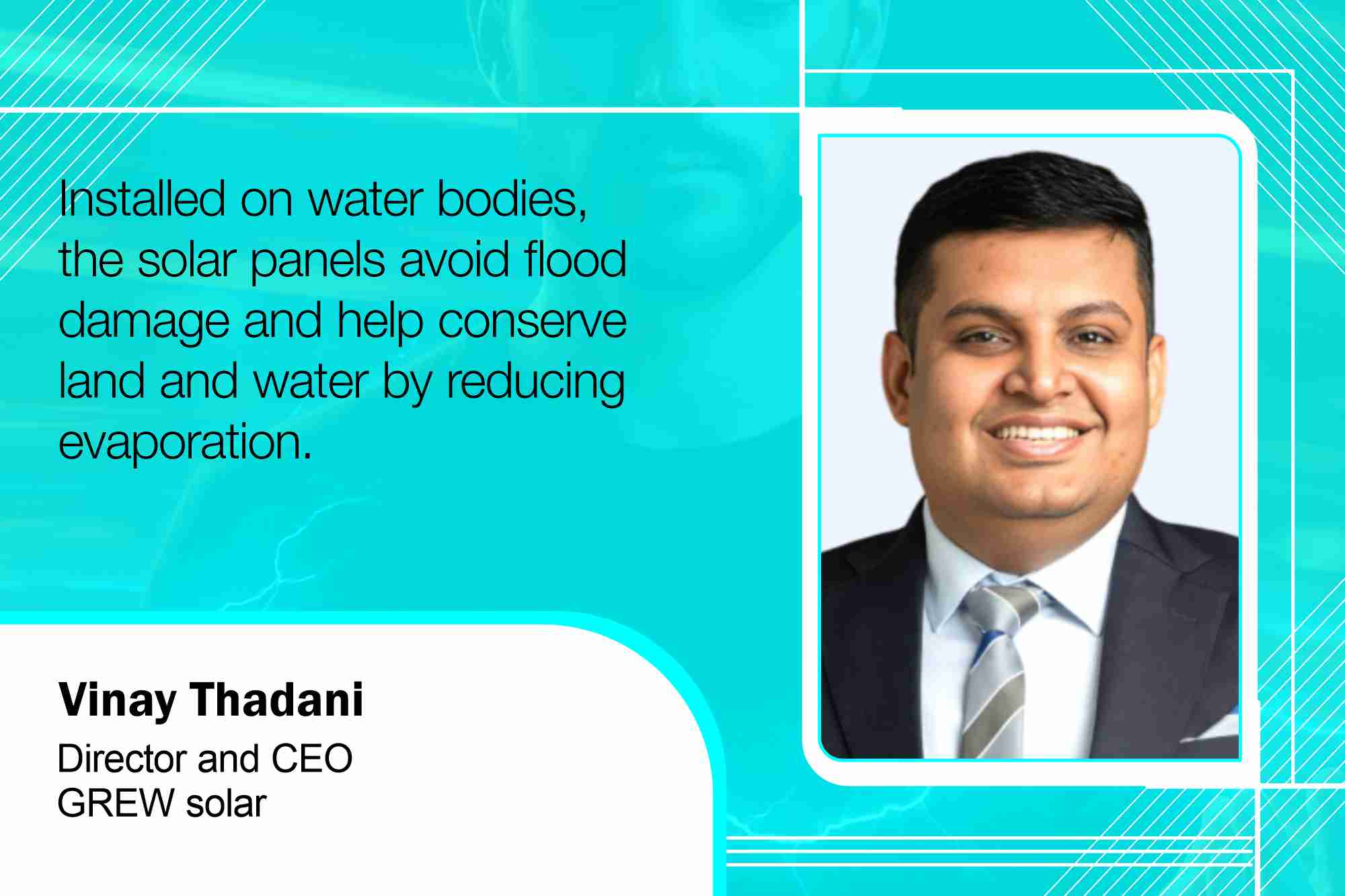Floating solar farms and submersible substations offer hope for flood-prone regions
By Staff Report May 23, 2025 4:52 pm IST
By Staff Report May 23, 2025 4:52 pm IST

Installed on water bodies, these solar panels avoid flood damage and help conserve land and water by reducing evaporation.
India is rapidly transforming its energy landscape by integrating innovative solar technologies and sustainable infrastructure. With growing urbanisation and increasing energy demand, solar power is emerging as a critical solution to reduce dependence on fossil fuels, cut emissions and enhance grid resilience. Advancements like solar-powered and floating solar-integrated substations are helping to tap the growing energy need. With cutting-edge innovations in solar panel technology and progressive financing models, India is heading towards its renewable energy targets.
How can floating solar panel farms complement submersible substations in flood-prone areas?
Floating solar farms and submersible substations offer a flexible, clean energy solution for flood-prone regions. Installed on water bodies, these solar panels avoid flood damage and help conserve land and water by reducing evaporation. Submersible substations, designed to operate underwater, ensure uninterrupted power during disasters, which is crucial for hospitals and emergency services. Projects like the ‘Ramagundam’ and ‘Kayamkulam’ floating solar plants highlight innovative approaches to climate-resilient infrastructure in India. As extreme weather events grow more frequent, this dual-technology model supports continuous power supply, climate adaptation and efficient land use, setting a smart benchmark for renewable energy deployment in vulnerable and densely populated areas.
How are innovations in solar panels enhancing energy efficiency and sustainability?
Innovations in solar technology are revolutionising energy efficiency and sustainability. ‘Agrivoltaics’ enable dual land use, growing crops under solar panels, boosting rural development and conserving water. ‘Perovskite solar cells,’ with lab efficiencies above 30 percent, offer lightweight, flexible alternatives to silicon, though stability issues remain. Silicon-based advancements like ‘TOPCon’ (Tunnel Oxide Passivated Contact) and ‘HJT’ (Heterojunction Technology) enhance low light and heat performance. Tandem solar cells combining perovskite with silicon theoretically reach even higher efficiencies, up to 45 percent. These breakthroughs lower electricity costs, reduce manufacturing emissions and expand solar applications from farms to rooftops and windows, paving the way for a cleaner, more robust energy future across diverse sectors.
What role do solar PV systems play in reducing dependency on conventional power sources for substations?Solar PV systems can reduce substations’ reliance on coal and gas by supplying clean, localised power, especially during peak demand in summer months when solar efficiency is highest. This minimises transmission losses, eases the load on thermal plants and improves grid reliability. As India urbanises rapidly, solar integration will help cut emissions and support national decarbonisation goals. The Union Budget 2025–26 ₹1,500 crore allocation to the solar grid sector highlights the push for cleaner infrastructure. Solar-powered substations align with India’s renewable energy targets, strengthening energy security under the ‘Digital India’ and ‘Viksit Bharat’ missions through cost-effective decentralised power generation.
What innovative financing models support the large-scale manufacture of solar panels in India?
Solar panel manufacturing in India is expanding rapidly and is driven by innovative financing models. The ‘Production-Linked Incentive (PLI) Scheme’ rewards manufacturers based on output, lowering production costs and boosting profits. Green Bonds attract eco-conscious investors channelling funds into clean energy projects with financial returns. Public-Private Partnerships (PPPs) enable collaborative investment in large-scale solar initiatives, sharing financial risk between sectors. Non-Banking Financial Institutions (NBFIs) support smaller manufacturers with credit access, while External Commercial Borrowings (ECBs) allow companies to raise global capital at competitive rates. Together, these models are making solar manufacturing more scalable, cost-effective and sustainable, positioning India as a global leader in clean energy.
We use cookies to personalize your experience. By continuing to visit this website you agree to our Terms & Conditions, Privacy Policy and Cookie Policy.